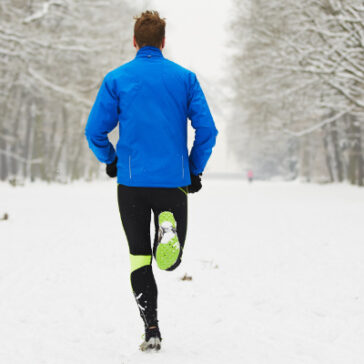I’ve done a fair few races in my time, but regularly in my own “I only need 5 minutes to get everything ready” way, I end up wandering around my flat looking for stuff and generally getting stressed. I then think “Why did I leave this until 11:45 pm to do this?”
I’ve racked my brains to think of things to do pre-race to make your race experience go as smoothly as possible.
The Day Before
- Number, timing chip, pins
Pin your number on your vest/top before you go. They’re fiddly and never quite go on straight, but doing it in the relative calm of your house is better than doing in a wet grassy field or when your running for the starting pen. Do the same with your timing chip (although most seem to be on the back of numbers now) Keep a stash of safety pins where you know where they are. I have little bundles all over the place.
- Charge your Garmin/GPS/Tracker
You thought you’d turned it off or it was fully charged. Likely not! How will you prove it on Strava otherwise?
- Find your favourite kit (and your lucky pants!)
Some may be in the wash or at the back of the drawer. If you’re in anyway superstitious like me, you will likely have preferred race gear. Pull it all out and arrange in a neat pipe, ready! Think about or look up the weather for tomorrow. Do you need gloves, a woolly hat, a cap, your sunglasses?
- Do you need a change of clothes for afterwards!
This is normally just a clean top to replace your wet or sweaty one, although races with finishers t-shirts help with this. The rest of your gear is the stuff you arrived in. But high maintenance runners may want fresh boxers/pants, socks, trainers, flip-flops.

At the Great North Run last year I had a full change of clothes ready for after the race. That wind off the North Sea was bitter and I was glad of the trackie bottoms, hoodie and jacket. After a marathon, a change of trainers or some flip-flops are a good shout, however comfortable your race shoes are. After a rainy Ride London this year, a dry set of clothes was a godsend and made the journey home much more pleasant.
- Bin bag/old jumper or suncream
At a big spring race, you may be standing around for a while between dropping your bag and the start. Take an old piece of clothing to keep you warm and throw it off before the start. However bad that fluorescent fleece is, there’ll be many jealous, shivering people envious of your lovely fleece before the start. These clothes are normally collected and send to charities, so don’t think it’s wasteful. If rain is on the horizon (or no old clothes), cut 3 holes on a bin liner and take it with you. If it’s hot and sunny, go and find the suncream you’ve not used for 2 years!
- Work out how to get there and where to park
This is not always the simplest thing if it’s an early Sunday morning start in London. Sometimes the trains don’t start early enough. There can be planned rail engineering works and therefore a replacement (slow) bus service is in use. Tube lines can be closed.
You will quite possibly be a bag of nerves in the morning. Take some time to be clear on how you’re getting to the race, be it public transport or by car. If your driving, where can you park? It’s better to be early than late, but not too early. It can be a balancing act. You don’t want to be sheltering from the wind next to a portaloo for 45 minutes! Build in some sensible contingency.
- Are you going to disturbing others in the morning?
If so, get your entire gear ready in one place out of the bedroom. You can always grab a few extras to add to the pile and make a call whether you need it in the morning following a look at the weather outside.
- Do you need anything at all?
On a sunny day and if you’re coming straight home, do you need a bag at all? Vest, shorts, socks, shoes, pins, number, timing chip, debit card, oyster card, house keys, a bottle of water. You’re good to go.
- Hydrate
You should hydrate in the days running up to a race. If you leaving the house, take a bottle with you to keep yourself topped up. Your urine should be a pale straw colour or transparent yellow. Thirst is a very early sign of dehydration and is your body giving you a nudge to drink some water.
The morning
- Plasters
To quote myself from my Marathon tips post –
“Fellas, get two big plasters and put them over your nipples. If you’ve never had issues with jogger’s nipple before, do it anyway. It’s not worth the risk”.
- Vaseline
Apply to all areas that may have a chance of rubbing especially between your legs. For the “definitive” post on chafing see my post here.
- Suncream
Apply before you go, if required.
- Toilet
Go for a “Number 2” before you leave home. Don’t rely on there being any toilets on the way. Pubs will not be open, cafes may not have toilets or they are for customers only and at a big race, thousands of other people want to use the toilet too. If the nerves do get the better of you and you think you will have to play an “away game”, take your own emergency toilet paper with you.
A quick tip for the guys – at any race, if there is a normal toilet block such as a changing room, a YMCA or a local pub, the queue that is winding out the door is for the cubicles. If you just need a wee, push past it and the urinals will be free. This is probably my greatest running tip and has saved me many times.
- Valuables (not applicable if travelling by car or have a cheer squad)
The quality and security of bag drops can vary massively. Sometimes they are well manned by very trustworthy looking pensioners. Sometimes it’s a free for all, where no one is even checking numbers that the people entering the tent are even runners.
Although I have never had an issue (i.e. lost anything) at a bag drop, think “Do you need all your valuables?” Maybe just your door key and debit card that you can carry with you when you run. Phones can be a tricky decision. I’m not sure that I’m leaving an iPhone X in my bag, but do I want to carry it during the race? In a vest, with short shorts on. Probably not.
A good armband or waistband helps. Some shorts and leggings now come with a secure phone pocket in the lycra. On running LINK. A number of running belts I’ve used have ended up rubbing me and taking the skin of my lower back due to them moving around.
There is a running belt by Flipbelt (that I have not used) but it looks like it may solve the movement and rubbing issue. At £32 or $36 for the zipper version, it’s fairly expensive, but not really if your phone costs a £1000 or $1000. It has great reviews on the US website and can be used for hiking, cycling and travelling.
- Hydrate/Drinks
You don’t want to drink too much on the race day morning or you’ll have to go to the loo constantly. See “Toilet” above. Sip a Lucozade or Gatorade in the morning to quench your thirst and for some extra sugars but not to hydrate.
- Strategy
Whilst on the train or in the car, figure out your strategy. I’m not one to talk about race strategy as it normally goes flying out of the window as soon as I cross the start line. Have a think about what your goals for the race are? How you are going to achieve it or pace it? What are the weather conditions? What’s your real conditioning and injury status? Not all races have to be PB/PR attempts. They can be used as warm-ups for PB/PR attempts!
Before the start
- Warm up
Warming up still feels a bit weird. I know it’s good to do, but it makes me feel like I’m a pro or something. Jogging up and down, like I’m about to take part in a World Championship final. Maybe it my imposter syndrome kicking in. Do it anyway, no one gives a sh*t. Have ever looked at your heart rate graph at the start of a race? It can be quite startling. Having the engine warm beforehand really does help.
- Toilet
If you’re in your pen and moving towards the start and want to go again, slip out before you cross the timing chip sensors. Remember your time starts when you cross the sensors.
Just before the gun
- Tie your laces properly.
- Tie your shorts/leggings up.
- Connect your GPS giving it plenty of time to connect before the gun.
- Take a deep breath and smash it.






